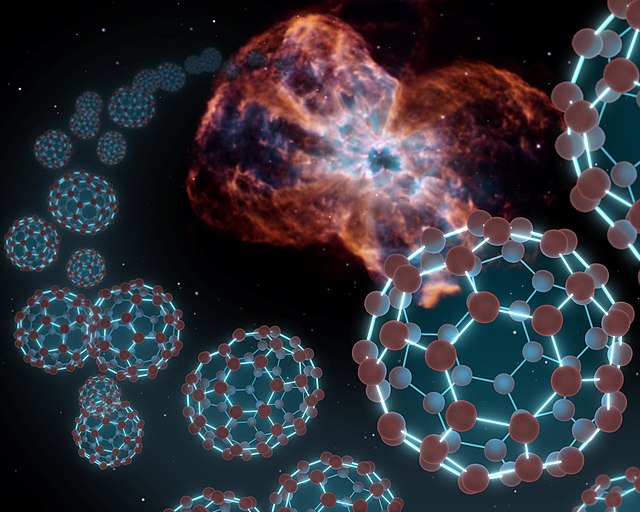Research
Some of the projects we have been involved are listed below.
Nanocarbons in space

Prof. Erbahar is currently the leader of the 1st working group (WG1) of COST Action CA21126 - Carbon molecular nanostructures in space (NanoSpace). WG1 brings together observational astronomers, laboratory spectroscopists and theoretical chemists to provide the technological base that will allow the prediction and identification of the spectral signatures of nanocarbon species present in space and the determination of their abundance and spatial distribution. This involves further advances in high-level quantum chemistry to provide reliable predictions of spectral signatures across the UV-radio spectral range, development of appropriate laboratory experimental programmes to test the theoretical predictions for well-defined neutral and charged nanocarbon species and provide experimental spectral data with the requisite resolution for comparing with observational data across the spectral range.
Catalytic activities of carbon nanostructures in extraterrestrial environments

James Webb Space Telescope (JWST) which was launched in 2021 has created a great amount of excitement in astrochemistry and astrobiology community. The reason for this enthusiasm is due to its observational power in the infrared region which overlaps with the vibrational spectra of molecular species. JWST has already started to contribute significantly to our understanding of the existence and distribution of carbon nanostructures in the universe. There are currently more than 200 molecular species identified in space and this number is growing steadily. Hence, the chemistry of these molecules under harsh extraterrestrial conditions is one of the increasingly hot research topics which lies in the intersection of experimental chemistry, observational astronomy and computational physics. In this regard, we have previously investigated the interaction of water with fullerenes under ultra high vacuum conditions We are currently running simulations about the catalytic activities of carbon nanostructures and are involved in collaborations with experimental groups towards a better understanding of carbon astrochemistry.
Tribology modelling

Understanding the tribological properties of materials is crucial in reducing wear and friction losses. This is especially important in today's world facing climate and energy crisis. We are very enthusiastic about contributing to the fundamental theory of nanoscale friction. Our previous work in this regard was about tribological properties of graphene on different substrates was published in Carbon. We are currently executively running a TUBITAK 1001 research project (no: 122F022) about the tribological properties of twisted bilayer graphene structures. The project is a collaborative action involving the experimental groups located in Izmir Institute of Technology and Yasar University and it covers production, tribological characterization as well as the simulation of the structures. The video (in Turkish) we have used in the application process can be reached from this link.
Machine learning in the prediction of physical properties

We have been constantly following the developments about the new techniques introduced to condensed matter physics. Machine learning (ML) approaches to physical problems have started to become a significant role in the investigation of physical properties of materials. While the applications are increasingly numereous we are particularly interested in pattern recognition where human intuition could be complemented by computers. One such problem we have been working on is the characterization of moiré lattices in twisted bilayer graphene where the problem lacks an analytical solution and beyond the capacity of human pattern recognition due to its complexity. We are using ML techniques for predicting physical properties and train ML models using the contributions from local environments to predict the phonon spectrum.
Seeking high Tc superconductivity in low dimensional nanomaterials

Superconductivity has been one of the hottest topics in condensed matter physics since its discovery 112 years ago. Due to its important potential applications regarding energy loss preventation 8 Nobel prizes have been awarded to related subjects in the last century. In the midst of the climate and energy crisis humanity's need for economically viable solutions in this domain has even become more important. The greatest challenge in this aspect is the fact that the phenomenon is only observed at low temperatures. The research in the field is mainly focused on raising critical temperature of superconductors. In one of our previous works we had proposed a solution to Tc problem by the use of low dimensional nanomaterials. This theoretical work is still waiting for experimental verification and we are very keen on developing a collaboration with experimentalists.